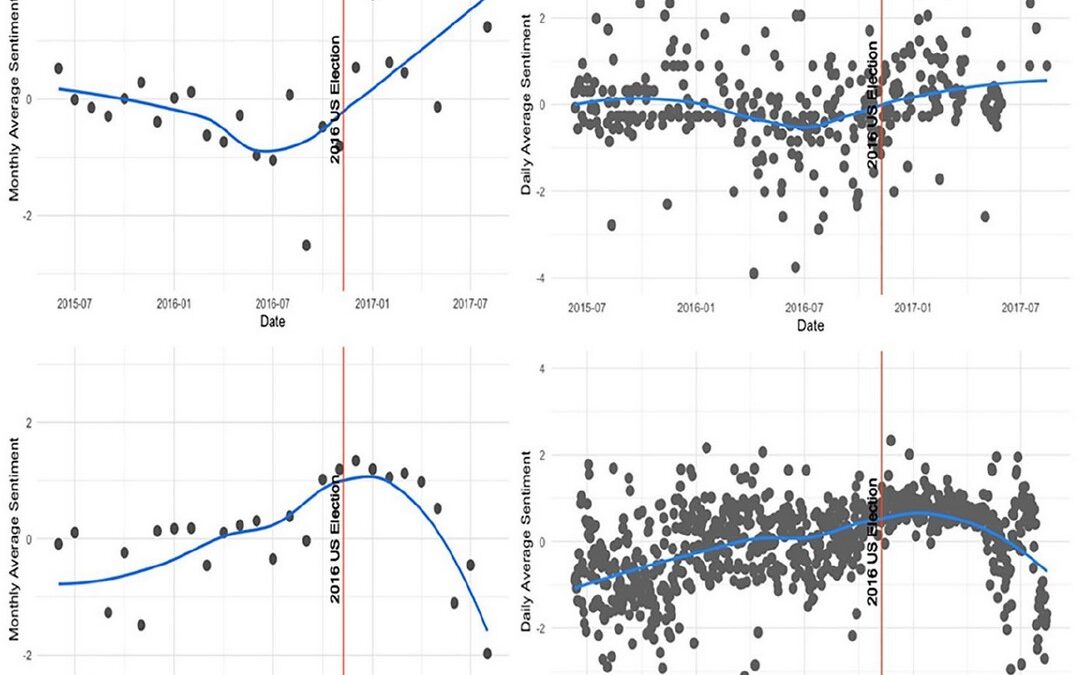In recent years, misinformation, disinformation, and online propaganda have proliferated across diverse digital media platforms. Past attempts of malicious actors to disseminate unreliable and misleading information through social media have effectively fragmented the public sphere, posing a serious threat to democracy. Much scholarly attention has been paid to engaging people in more deliberate, effortful, and critical thinking processes to counter these threats. But the problems, as well as potential solutions, are not limited to the cognitive domain. To achieve a healthy information environment, one must also understand the role of emotion—the types of emotional appeals applied, their timing, through what mediums they are transmitted, and which constituencies they target.
Our research contributes to an understanding of emotion in the context of state-sponsored social media propaganda. Drawing on the Russian Internet Research Agency (IRA)’s propaganda campaign on social media platforms during the 2016 presidential election, the TIPI research team analyzed 3.5K Facebook ads and 3M tweets to examine sentiment and content appeals.
Our findings show contrasting temporal patterns of sentiments employed by the IRA on Facebook and Twitter, suggesting that platform-level differences guided decisions on how the IRA may have manipulated emotion in online propaganda. The findings also indicate how emotional strategies target certain populations intensively, primarily centered on left-leaning and African-American identities. We discuss these results and argue that emotional content and intensity should figure into platform companies’ efforts to identify and remediate manipulation.
This investigation was sponsored by Good Systems, a UT-Austin Bridging Barriers Grand Challenge.

